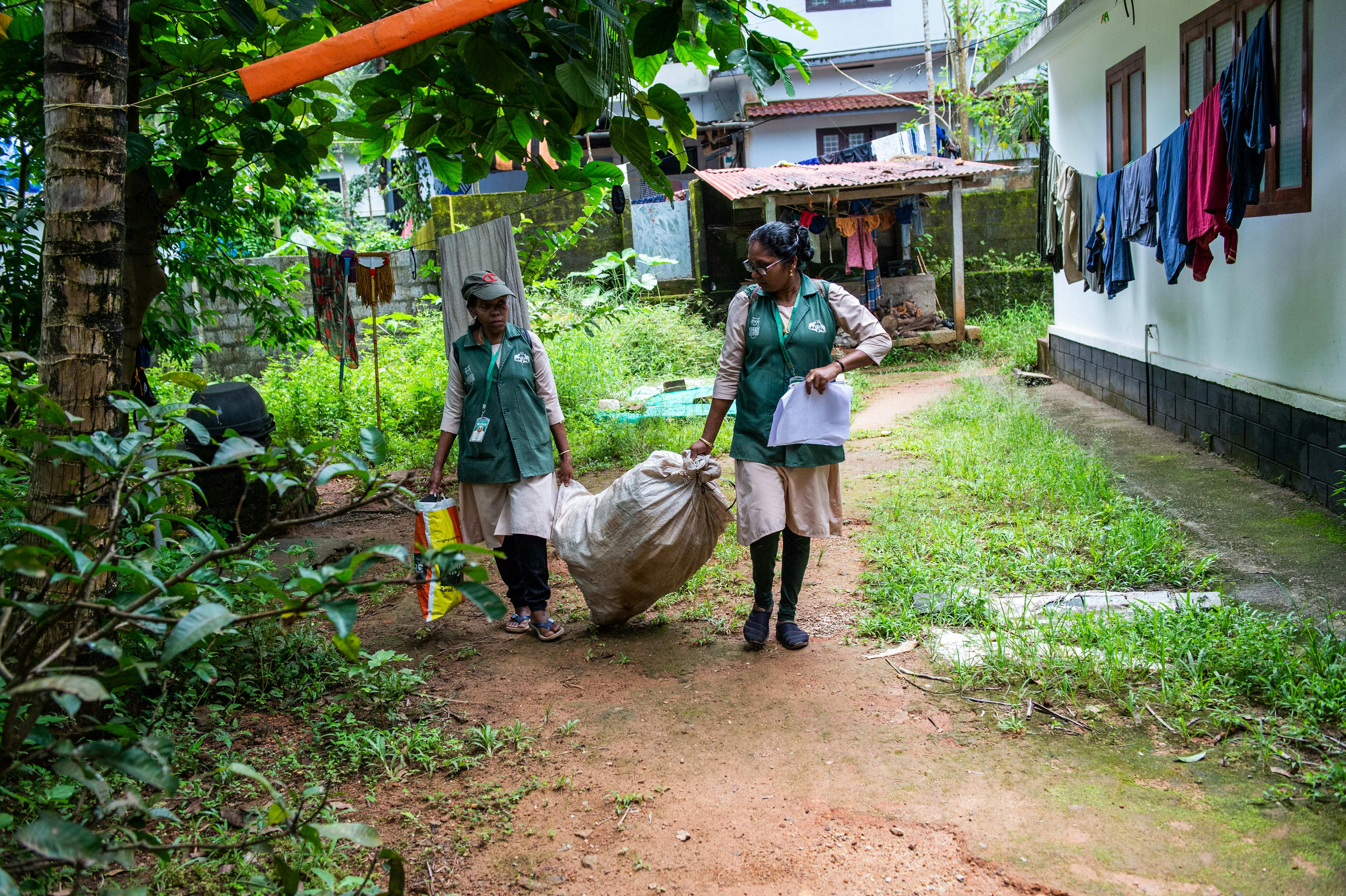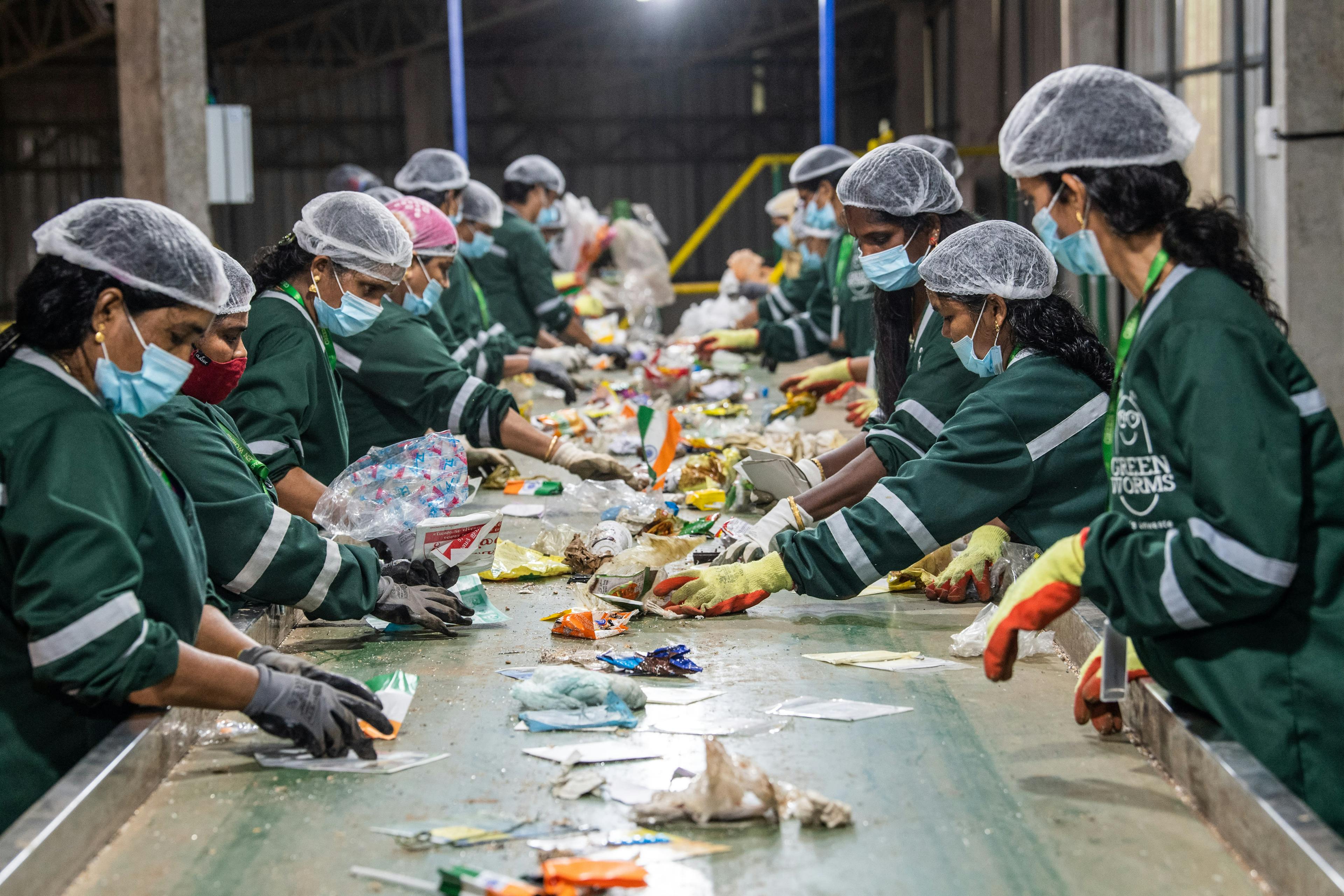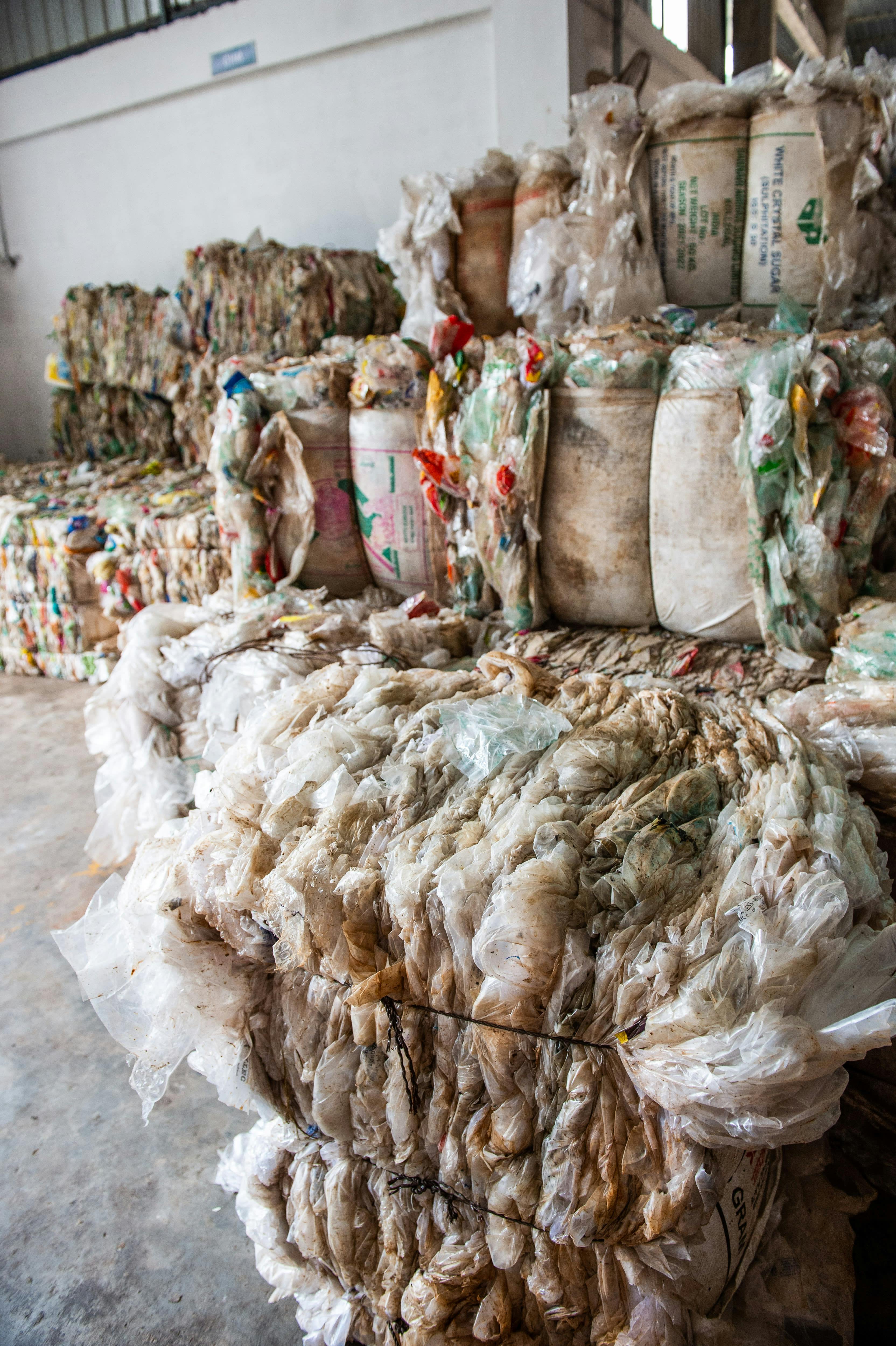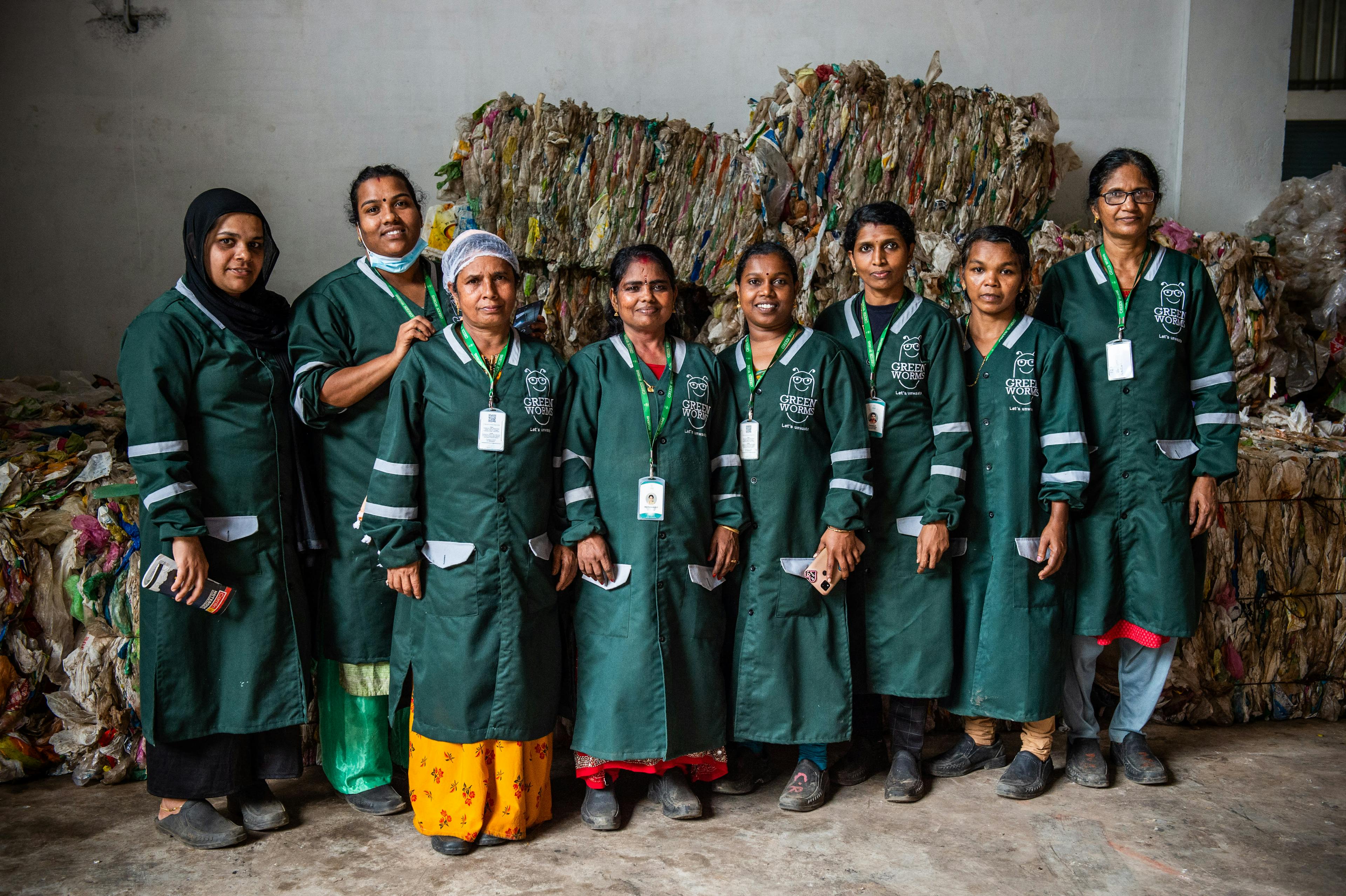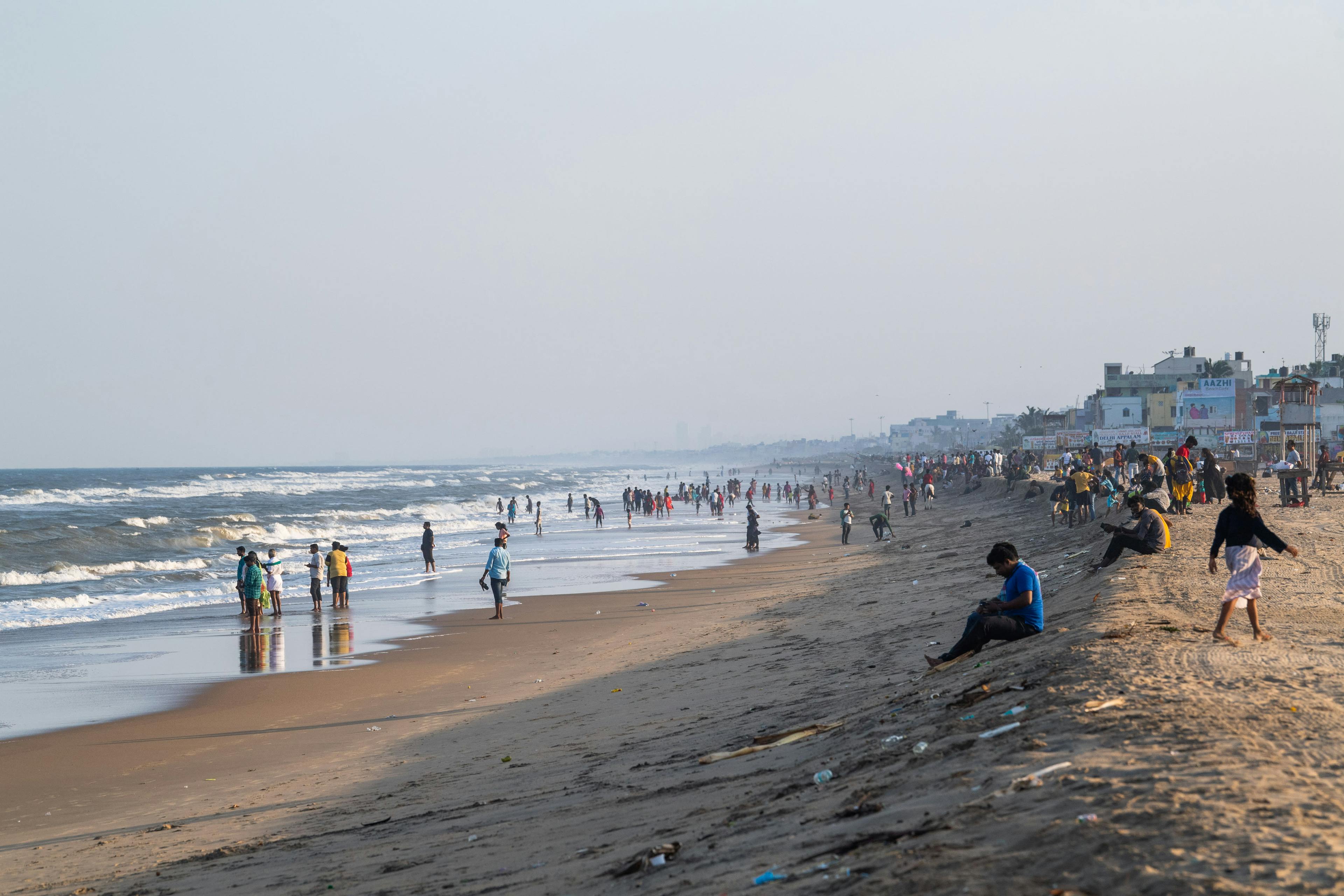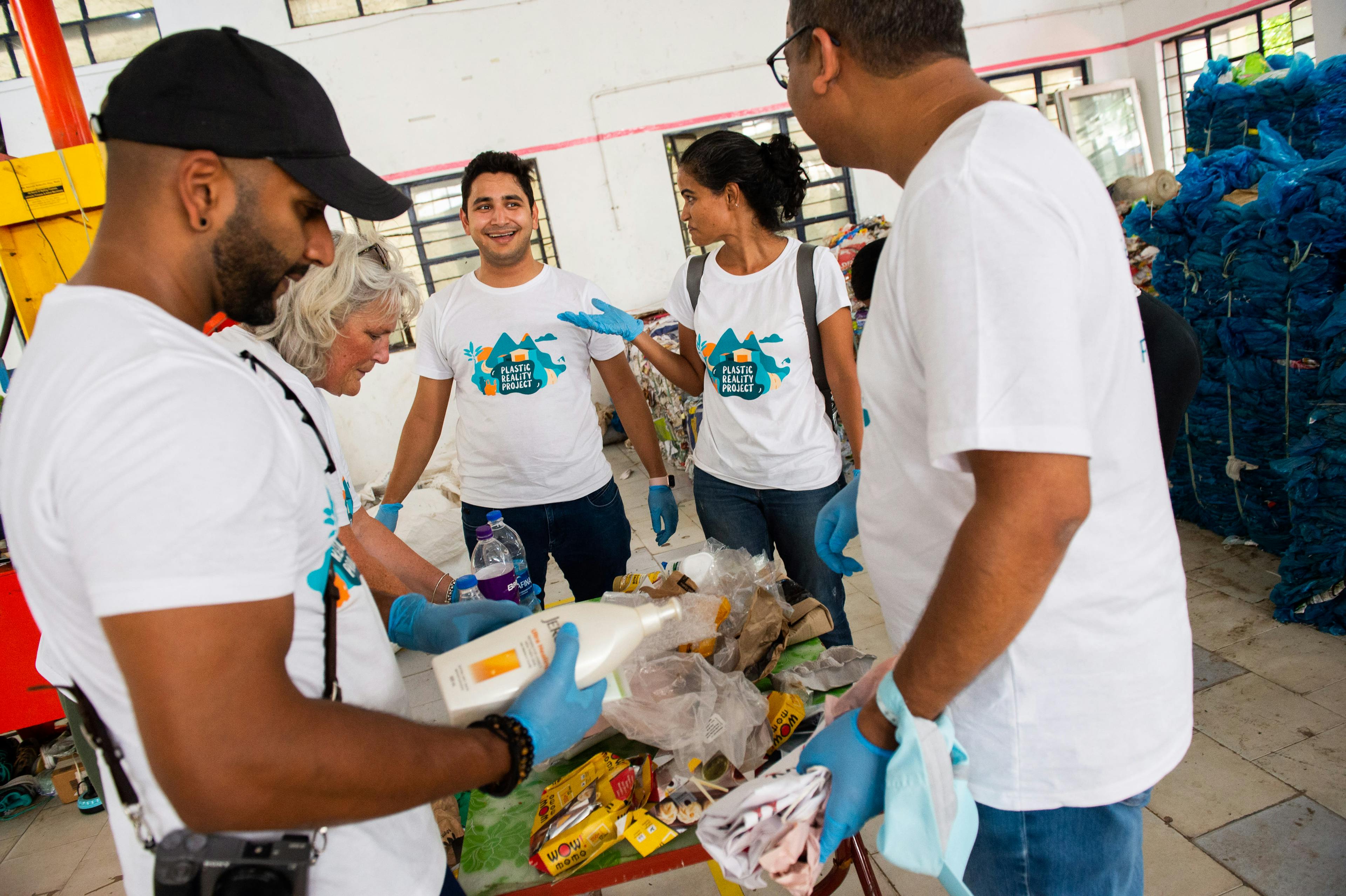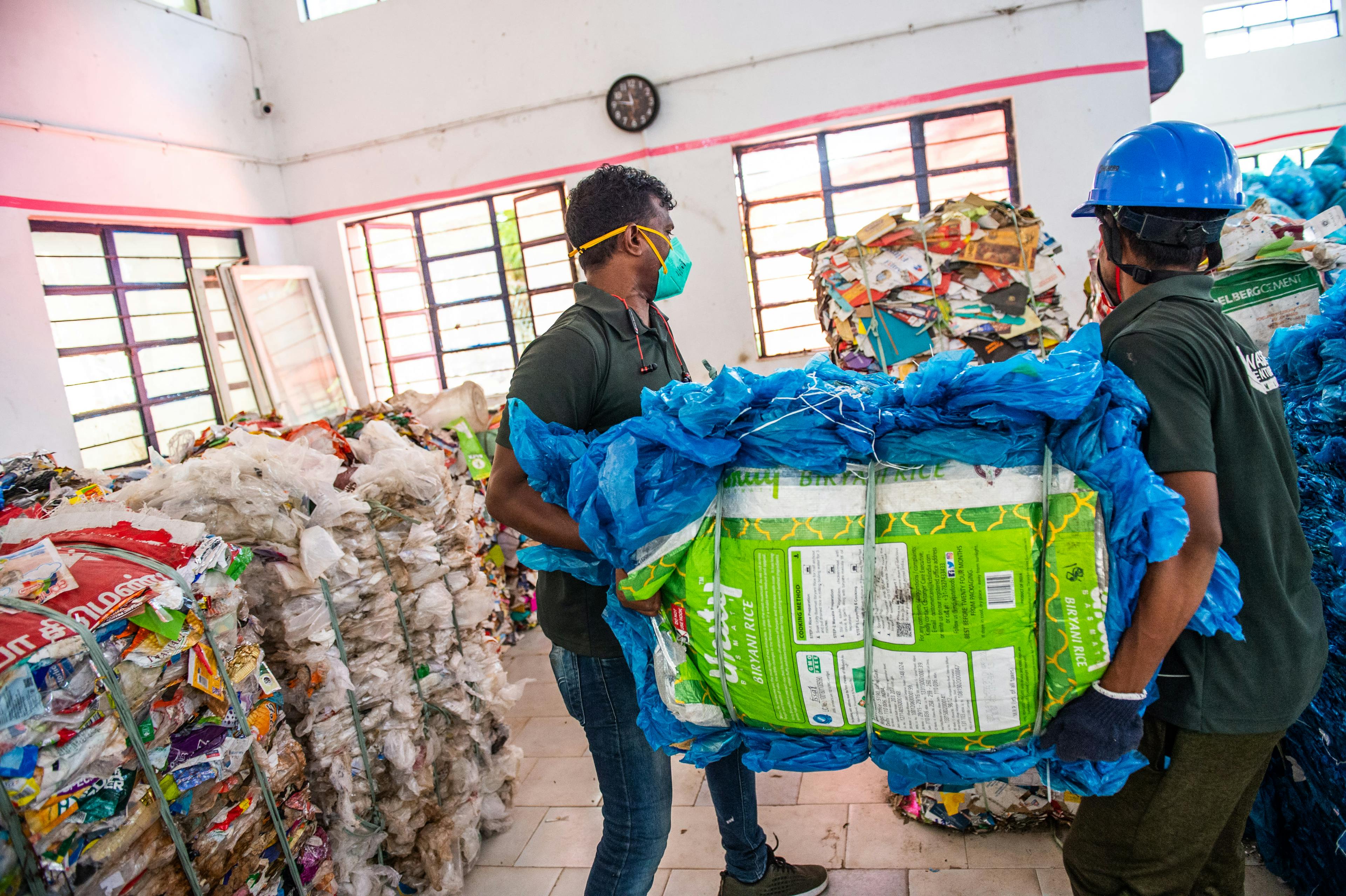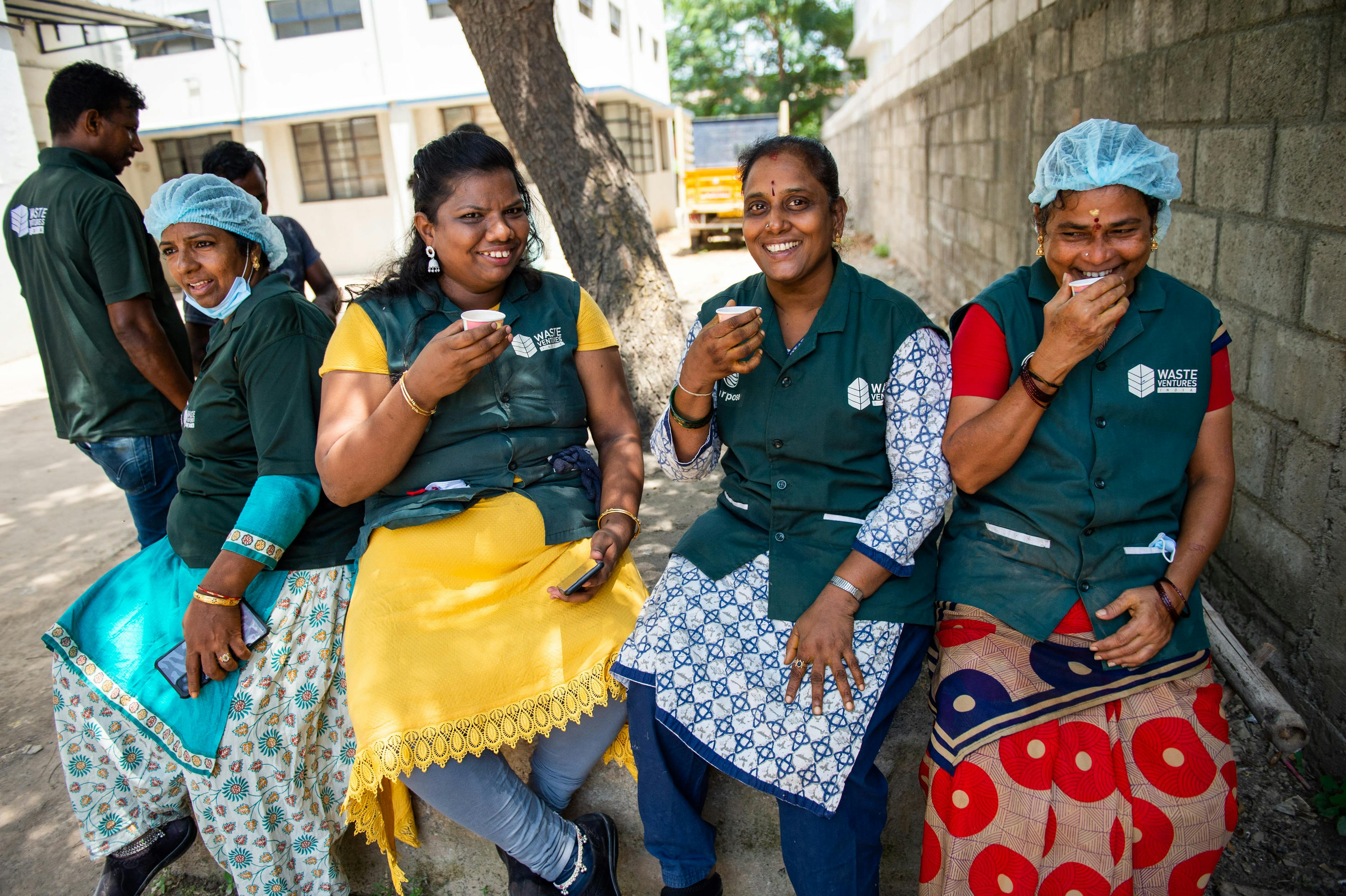How local heroes are solving one of the dirtiest problems on earth
In 2017, Svanika Balasubramanian was standing in the middle of the Deonar dumping ground, outside Mumbai, India. By some accounts the oldest and largest dump in India. Perhaps the largest in all of Asia. It was one of the first landfills she ever visited.
“It was mountains, it was heaps and heaps of garbage on either side of us,” Balasubramian recalls. “In the distance you could see the Mumbai skyline. It was really the same thing. You had the skyline of buildings, and then right next to you was this big skyline of trash.”
She was still in college, traveling with classmates Peter Wang Hjemdahl and Aditya Siroya as they conducted research on a problem they’d increasingly become interested in: global plastic waste. In America, where they attended college at the University of Pennsylvania, the average person discards 231 pounds of plastic per year, and less than 9% of waste is recycled. As a species, humans produce 771.6 billion pounds of plastic waste each turn around the sun. So while Balasubramanian, Wang Hjemdahl, and Siroya had an idea of Deonar’s magnitude, the scale was still overwhelming.
What struck Balasubramanian, who was born in India, wasn’t simply the sheer size of the towers of trash, but how far-flung their origins were. She saw products that weren’t even sold in India, items that had somehow traveled from the U.S. or Canada to become building blocks in a monument of garbage halfway around the globe. There were plastic containers bearing dates in the mid-1990s, even the early 1980s. Things made and discarded in the prime of her grandparents’ lives.
Balasubramanian’s grandparents were a source of inspiration. They were children in “just barely independent India,” born in the wake of the country’s separation from the British empire in 1947. “They were raised in the early days of patriotism, when you really had to do your part to further society, and it's all for one and one for all,” Balasubramanian said. As teachers her grandparents fought for the rights of their students, especially girls, who were routinely pulled out of school to be married off as soon as they hit puberty They worked at the grassroots in the truest sense, visiting students’ homes to speak with their families about the importance of education, and raising money from the community to help families afford to keep their daughters in school. Their work with students became an entree into activism against gender and caste discrimination. When Balasubramanian and her parents left India for Oman when she was two years old, and when she left Oman for college at Penn, she carried the importance of fighting for a cause with her.
But there, in the middle of Deonar, thinking about her own way to make an impact, she realized something: The scourge of plastic waste was a problem different in kind from the ones her grandparents fought. It was too big to be beat with grassroots activism. It called for an innovative approach.
To fix the plastic problem, Balasubramanian, an Emerson Collective Dial Fellow, co-founded the social enterprise rePurpose Global with Wang Hjemdahl and Siroya in 2020, after several of those research trips. rePurpose is not a recycler. It’s not an environmental activists’ collective. It’s not a tech company building a recycling app or a materials science company engineering a plastic substitute. Instead, rePurpose creates opportunities for everyone fighting plastic waste to work together on a global scale.
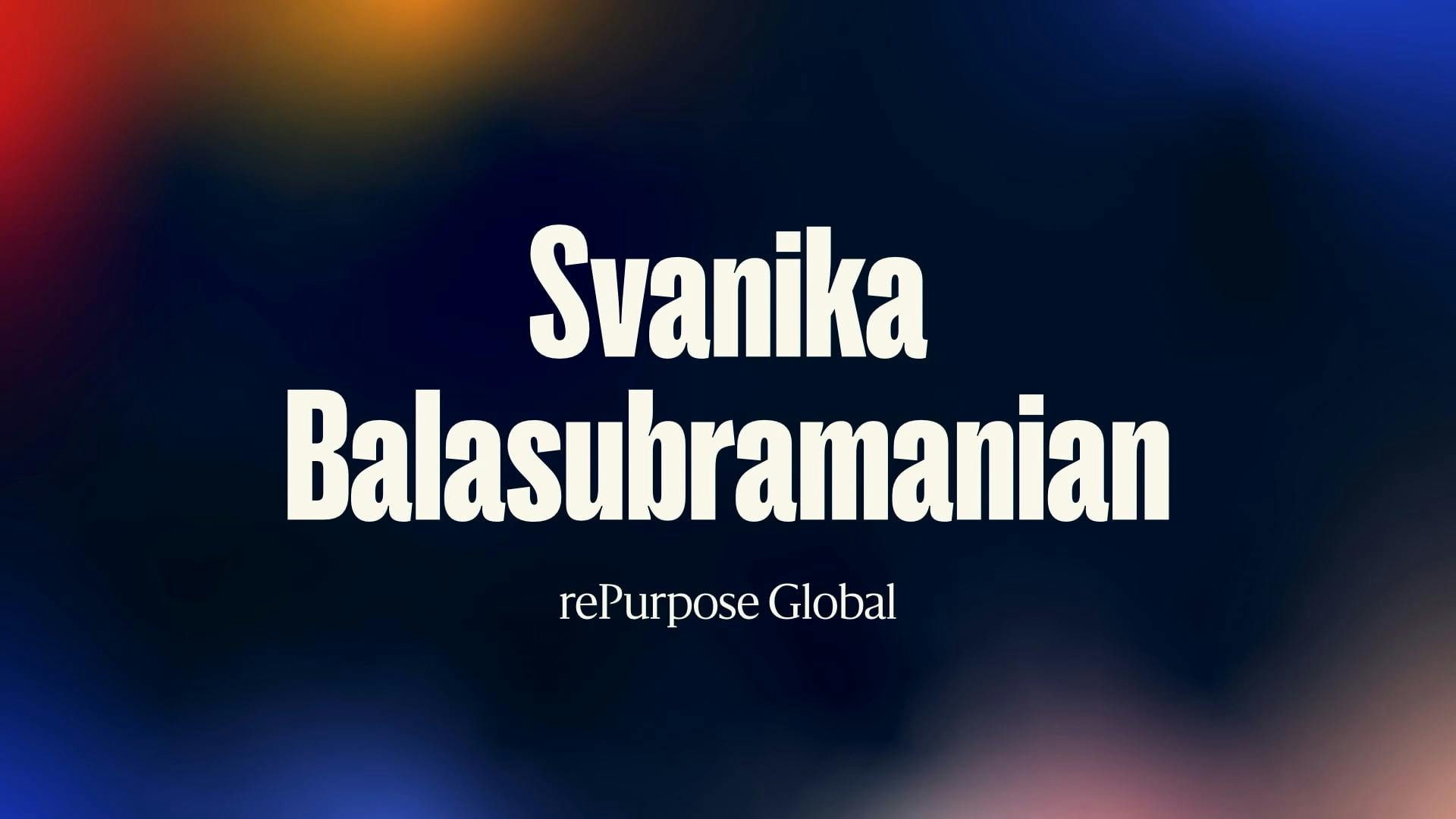
rePurpose co-founder Svanika Balasubramanian explains the global plastic problem—and her colleagues' solution—at the 2022 Dial Summit in Santa Cruz, CA.
In the shadow of another of the world’s largest landfills, Bantar Gebang, outside of Jakarta, a for-profit waste management company called Waste4Change is working with waste pickers to recover plastic that can be compacted into the ubiquitous pallets used to ship products all over the planet. It’s a great model: The plastic Waste4Change recovers is saved from being burned or piled to infinity, and it becomes a new product with real economic value. But Bantar Gebang is overwhleming. The landfill is so vast that at least 6,000 people—and perhaps as many as 20,000—are believed to live there. In the race between Jakarta’s wastefulness and Waste4Change, Waste4Change is behind: in the 9 years the company has existed, it’s only recycled about as much waste as Bantar Gebang gets from Jakarta in 6.5 years.
Around the world, there are lots of organizations like Waste4Change that make a big difference—and face an even bigger challenge. Balasubramanian and the rePurpose team met many of them on their research trips. In Kerala, India, the organization Green Worms is leading a project bringing curbside recycling to rural villages. In Bogotá, Columbia, the Association of Recyclers of Bogotá is boosting the city’s plastic recovery and turning collected material into eco-wood. In trying to understand how these small but mighty organizations could make a bigger dent in the plastics problem, the rePurpose team had the dispiriting realization that they all shared one fundamental challenge: they were underfunded.
But they also sensed an opportunity. Consumer packaged goods alone are the source of 90% of the world’s plastic waste, which means that a lot of the plastic these small organizations were recycling came from huge, multinational corporations—which had lots and lots of money, and in many cases had become increasingly interested in reducing the amount of plastic they used.
The scourge of plastic waste was too big to be beat with grassroots activism. It called for an innovative approach.
Inspired by carbon credit systems that harness market forces to reign in greenhouse gas emissions, rePurpose developed a system for plastic recovery that companies could use to measure and ameliorate the plastic waste they create. First, rePurpose assesses a company’s “plastic footprint,” a metric that captures how much new plastic it puts into the world. From there, they help the company find ways to shrink their footprint, like redesigning packaging or switching to alternate materials. But those changes don’t happen overnight, so in the meantime, rePurpose presents the company with a portfolio of small plastic removal organizations from around the globe who, in some combination, can take as much plastic out of the environment as it puts in. The company can select, say, the projects in Bantar Gebang, Kerala, and Bogotá, and purchase plastic credits generated by their work. The revenue from the sale helps fund their projects and also generates a commission for rePurpose. When the plastic recovery the company finances through credits match its plastic output, it is “plastic neutral.”
Having a standardized system for plastic recovery investments solves the biggest challenge to making a system like this work: establishing trust. How can a manufacturer of packaged goods in one part of the world be sure it’s getting what it’s paying for when it’s engaging three small, distant organizations, all of which take different approaches to plastic removal? The rePurpose protocol standardizes each plastic credit as 1kg of removal, regardless of technique, and rePurpose provides verification for each project. The system makes it possible to look at curbside recycling in Kerala and eco-wood creation in Bogotá side-by-side. Before rePurpose, Balasubramanian says, “there was no one common global framework for removing plastic from the environment in the most ethical, sustainable way.” Now that there is, there’s a market for plastic removal for companies like Johnson & Johnson, Burt’s Bees, and Thrive Market—all of which work with rePurpose—to enter. Even better, every time a company enters that market and purchases plastic credits, it generates revenue for small enterprises doing the hard work of cleaning up the planet.
The impact of this system is more than just plastic removal. RePurpose’s 14 projects have helped more than 280 brands in 16 countries take action on their plastic footprints, to the tune of 30 million pounds of plastic—and they’ve also directly worked with almost 2,000 waste workers and positively impacted nearly 10,000 people in the communities they serve. In September of last year, Wang Hjemdahl and Siroya led a delegation of industry leaders and sustainability advocates on a tour of landfills, recyclers, and informal worker settlements in India. It was the inaugural trip of a planned five-year initiative called the Plastic Reality Project that rePurpose hopes will solidify participants’ understanding of this bigger picture—not just the issue and potential solutions, but also the people who are living them. Assessment, reduction, and recovery of clients’ plastic output are crucial pillars of rePurpose’s approach, but so is education. The Plastic Reality Project in some ways mirrors the founders’ early, immersive research trips.
That tie between global problems and local problems, global innovation and local economic opportunity, is something Balasubramanian has thought a lot about. Early in her journey, she reflected on her path, compared to others in her family who also fought for causes. “At the end of the day, their impact tended to be quite localized. It didn't have the scale,” she says. “The pace of change was not as rapid or as widespread as you would like for something that you spent your entire life doing.” But rePurpose has made it possible for someone like one of her grandparents to produce rapid and widespread impact. After all, the flip side of finding a plastic container from Canada in a landfill in India is that it means a person in India can help solve a problem that begins 8,000 miles away—if someone could figure out how to make it work. Luckily, Balasubramanian and her colleagues were willing to get their hands dirty.
